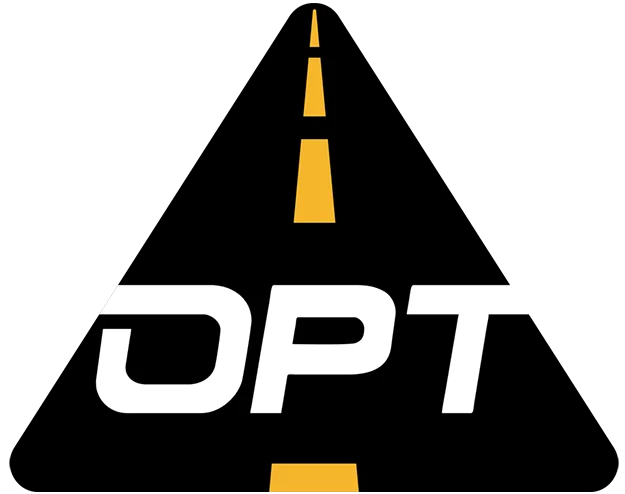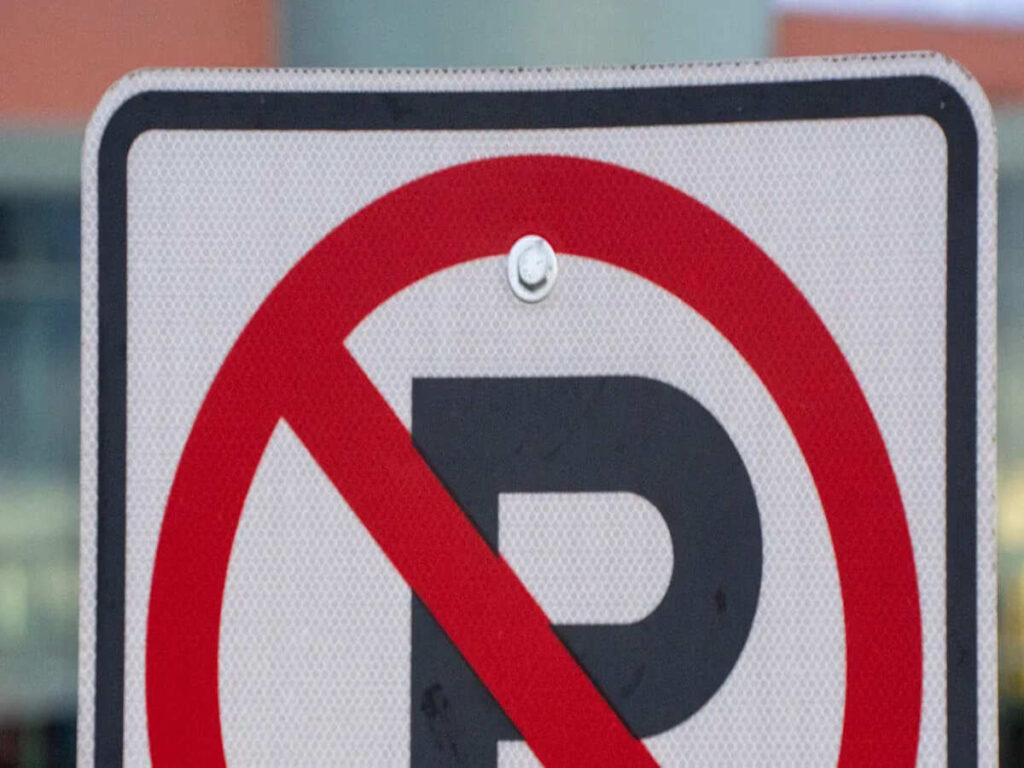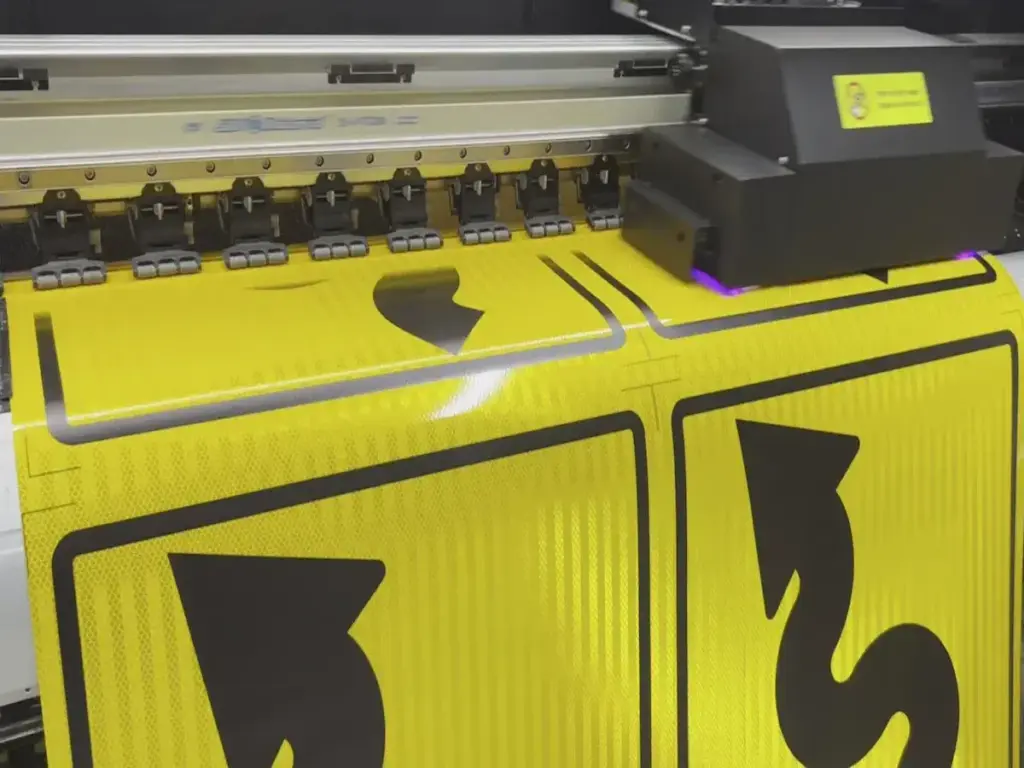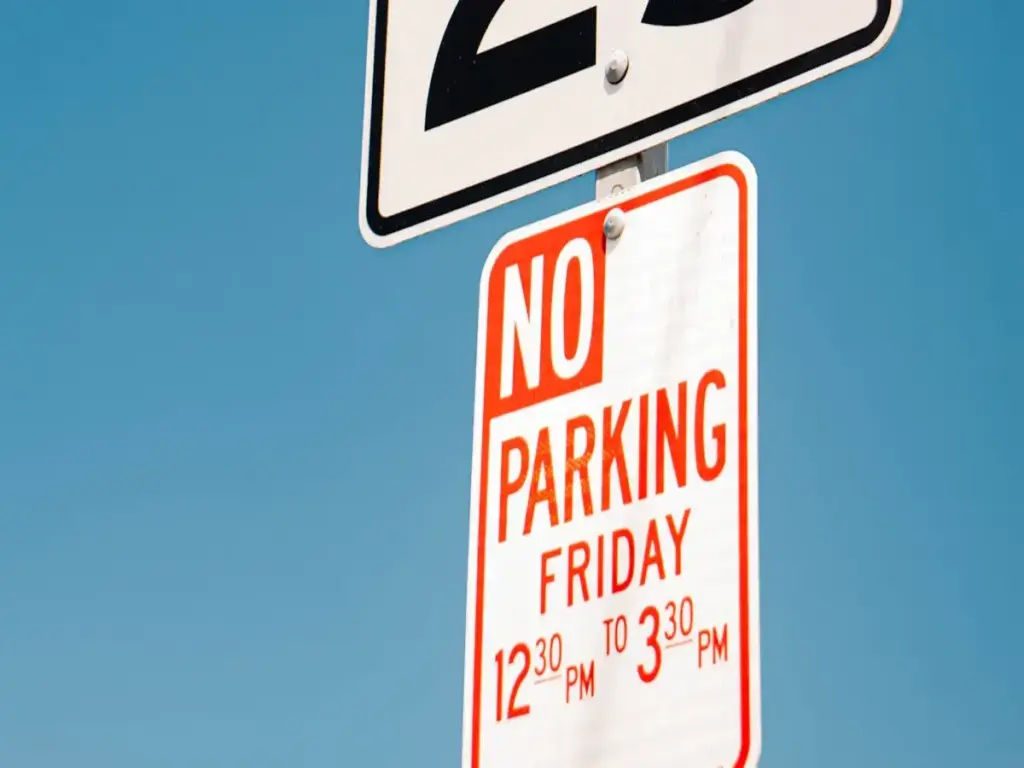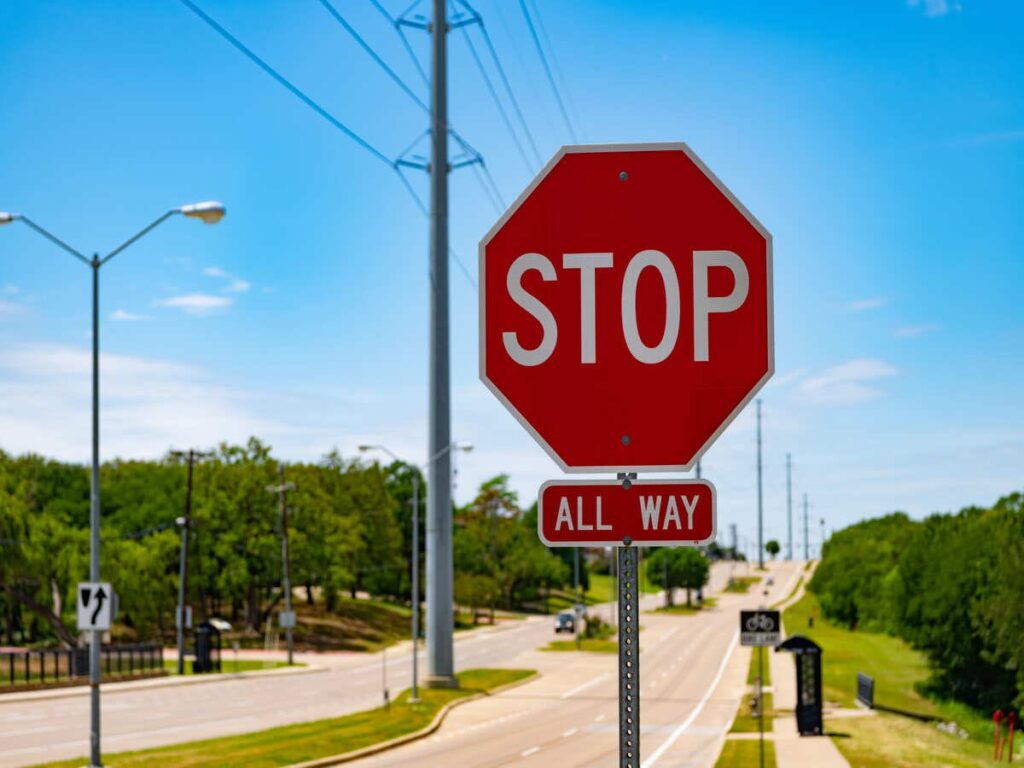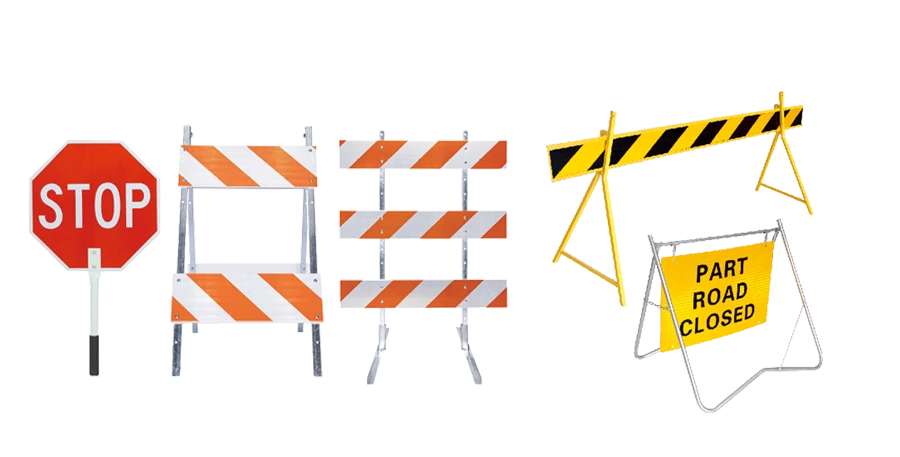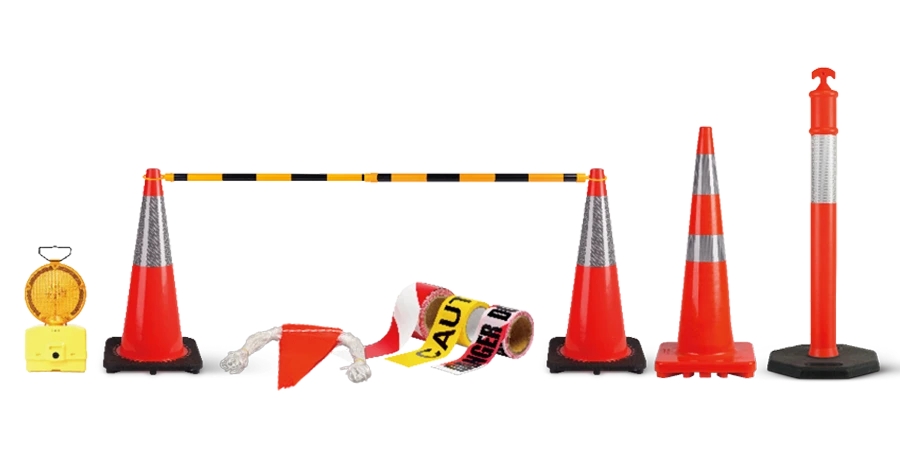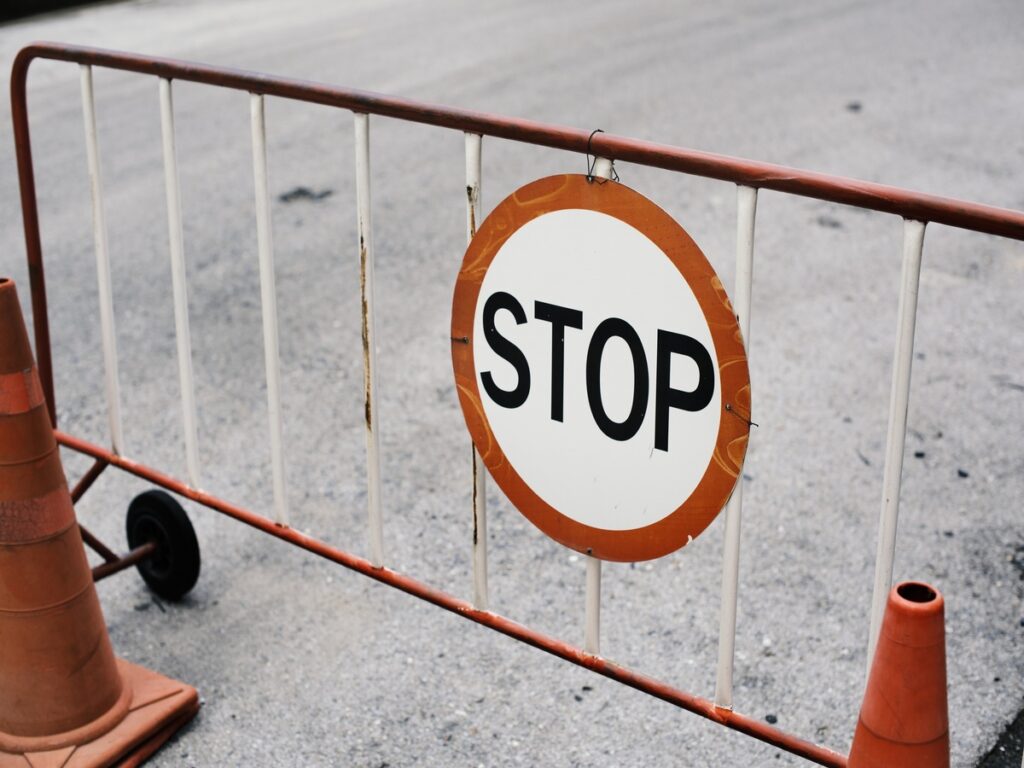
갑자기 차선이 바뀌는 밤에 고속도로에서 운전하는 상상해보십시오.. 누락되거나 잘못된 도로 교통 안전 표시가 이러한 위험으로 이어질 수 있습니다.. 연구에 따르면 대략적으로 나타납니다 40% 부적절한 간판으로 인해 자동차 사고가 발생합니다. 운전자는 급격한 회전이나 도로 조건 변화를 보지 못할 수 있습니다.. 이 중요한 정보가 없으면, 그들은 혼란스러워집니다, 너무 늦게 반응합니다, 그리고 충돌로 끝납니다. 명확하고 쉽게 눈에 띄는 도로 교통 안전 표시는 안전하게 안내하고 피할 수없는 사고를 방지하는 데 필수적입니다..
OPTRAFFIC은 내구성 전문 기업입니다., 가시성이 높은 도로 교통 안전 표지판 운전자를 명확하고 안정적으로 안내하도록 설계되었습니다.. 고속도로용인지, 건설 구역, 아니면 도시의 도로, OPTRAFFIC 교통 안전 표지판은 위험을 줄이고 교통 흐름을 안전하게 유지하는 데 도움이 됩니다.. 오늘 저희에게 연락하십시오 실질적인 차이를 만들어내는 사이니지 솔루션을 탐색합니다..
주요 테이크 아웃
- 명확한 도로 표지판은 혼란을 멈추고 사고를 줄입니다.. 표지판이 보기 쉽고 읽기 쉬운지 확인하세요..
- 공사 중 표지판을 자주 교체하세요.. 새로운 도로 설정에는 사람들의 안전을 지키기 위해 올바른 표지판이 필요합니다.
- 힘든 표지판을 만드십시오., 지속되는 재료. 좋은 신호는 명확하고 눈에 잘 띄게 유지됩니다., 어둠 속에서도.
- 다양한 언어로 기호를 추가하고 기호를 사용하세요.. 이는 더 많은 사람들이 규칙을 따르고 안전을 유지하는 데 도움이 됩니다..
- MUTCD와 같은 안전 규칙을 따르세요.. 이러한 규칙은 생명을 구하고 법적 문제를 예방합니다..
도로교통안전표지판의 중요성
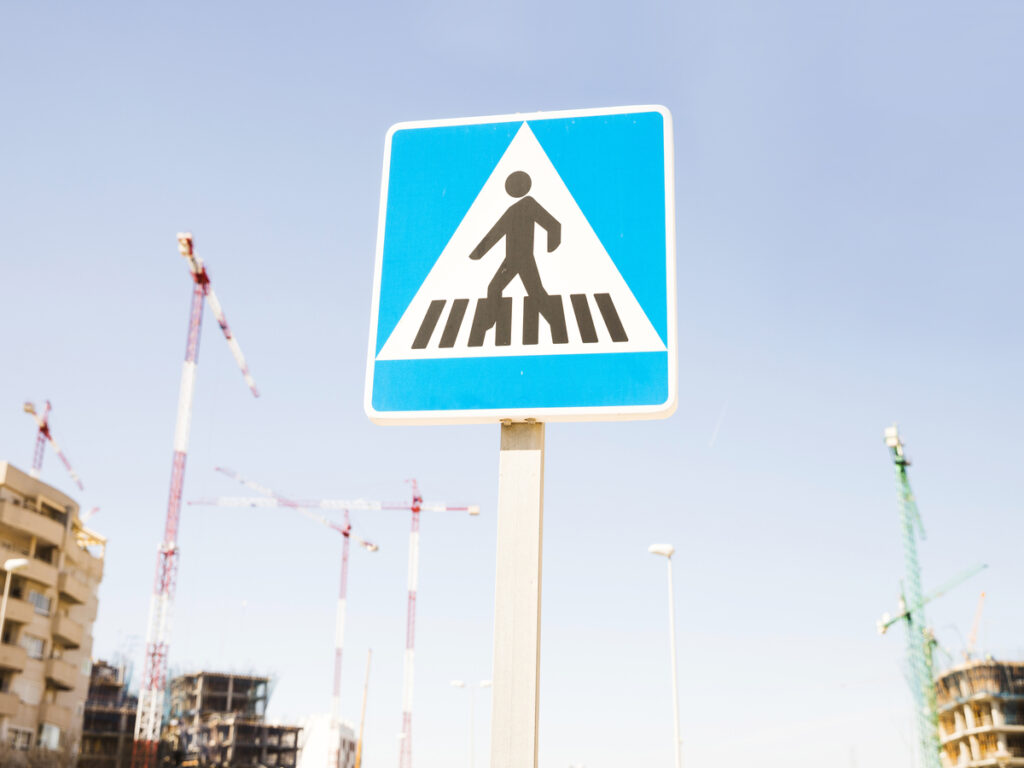
운전자 혼란 및 충돌 방지
도로교통안전표지판은 운전자의 안전을 위해 매우 중요합니다.. 급커브나 공사 구역 근처에서 무엇을 해야 하는지 알 수 있도록 도와줍니다.. 명확한 도로 교통 안전 표지판이 없는 경우, 운전자는 혼란스러워하고 실수를 할 수 있습니다. 연구에 대한 연구 30% 표지판이 불분명하거나 누락되어 잘못된 방향으로 충돌하는 경우가 많습니다.. 이러한 충돌은 눈에 잘 띄지 않는 밤에 자주 발생합니다., 좋은 신호를 더욱 중요하게 만드는 것.
잘못된 방향으로 충돌하면 사망 300 미국에서는 매년 사람들이. 이러한 충돌 사고의 대부분은 음주 운전자와 관련되어 있습니다., 하지만 나쁜 징조도 큰 역할을 합니다. 명확하고 읽기 쉬운 표지판은 사고 가능성을 낮추고 모든 사람에게 도로를 더욱 안전하게 만들 수 있습니다..
사고 예방을 위한 중요 정보 전달
도로 교통 안전 표지판은 운전자를 위한 조용한 도우미 역할을 합니다.. 위험에 대해 경고합니다., 속도 제한, 아무도 할 수 없을 때 차선을 변경합니다. Diana Stegall과 같은 전문가들은 좋은 징후가 안전을 유지하기 위해 적시에 올바른 정보를 제공한다고 말합니다..
다음과 같은 규칙 ANSI Z535.1 표지판이 간단한 단어를 사용하는지 확인하세요., 선명한 색상, 그리고 상징. 예를 들어, 그림이나 두 가지 언어로 된 도로 교통 안전 표지판은 모든 사람의 이해를 돕습니다., 그들이 어떤 언어를 말하든 상관 없습니다. 이는 특히 다양한 문화권의 사람들이 있는 지역이나 다양한 팀이 있는 직장에서 도움이 됩니다..
불량한 표지판이 도로 안전에 미치는 영향
잘못되었거나 오래된 도로 표지판은 심각한 문제를 일으킬 수 있습니다.. 연구에 따르면 명확한 표지판과 단순한 도로 배치는 운전자의 혼란을 피하는 데 도움이 됩니다.. 혼란스럽거나 차단된 표지판, 하지만, 사고 가능성을 높인다.
도로가 이해하기 어려울 때, 교통 표지판을 읽는 것이 더 어렵습니다. 이는 실수로 이어질 수 있습니다., 일방통행로에서 잘못된 방향으로 운전하는 것처럼. 좋은 도로 교통 안전 표지판은 운전자에게 정보를 제공합니다., 자신감, 여행 중에도 안전하고.
건축 지역의 불완전한 임시 표지판
예: 작업 구역에서의 야간 충돌
밤에 건설 지역을 운전하는 사진. 원뿔이 보이긴 하지만 차선 변경이나 전방 작업에 대한 명확한 신호가 없습니다.. 뉴저지에서 도로 수리 중에 이런 일이 일어났습니다.. 가는 자동차 45 mph가 주차된 포장 트럭을 들이받았습니다.. 없었다 “앞으로 도로 작업” 표지판 또는 적절한 차선 표시. 운전자는 반응할 시간이 없었습니다. 이는 작업 구역에 임시 표지판이 없으면 어떻게 사고가 발생할 수 있는지 보여줍니다..
왜 그런 일이 일어나는가: 경고 및 차선 표시 누락
임시 도로 교통 안전 표지판, 경고 표지판이나 차선 표시 같은 것, 매우 중요합니다. 그들 없이는, 운전자가 시간에 맞춰 속도를 줄이거나 차선을 변경하지 않습니다.. 연구에 따르면 럼블 스트립과 같은 도구가 운전자에게 경고를 줄 수 있는 것으로 나타났습니다.. 실시간 업데이트를 제공하는 디지털 표지판은 운전자의 안전 유지에도 도움이 됩니다.. 그러나 일부 계약자는 비용이나 시간을 절약하기 위해 이러한 단계를 건너뜁니다.. 이것은 사고가 더 가능성이 높습니다, 특히 빠르게 움직이는 작업 구역에서.
작업 구역의 밝은 표지판에 대한 연구에 따르면 표지판이 잘 작동하는 것으로 나타났습니다.. 이러한 표지판이 있는 도로에서는 왼쪽 차선에 있는 차량이 적고 위험 지점 이전에 더 많은 트럭이 빠져나가고 있습니다.. 이는 좋은 신호가 교통 통제와 위험 감소에 도움이 된다는 것을 증명합니다..
계약자의 일반적인 실수
시공업체는 임시 표지판으로 인해 큰 실수를 저지르는 경우가 많습니다.. 일부는 콘만 사용합니다., 짧은 프로젝트에는 충분하다고 생각함. 다른 사람들은 다음과 같은 규칙을 무시합니다. 균일 한 교통 통제 장치 매뉴얼 (mutcd). 이 규칙은 과속을 초과할 경우 경고 표지판과 차선 표시를 요구합니다. 40 km/h. 이러한 규칙을 무시하면 운전자가 위험에 빠지고 계약자에게 벌금이 부과될 수 있습니다..
이것을 고치려면, 계약자는 안전 규칙을 주의 깊게 따라야 합니다.. 강력한 사용, 명확한 표지판과 안전 전문가의 참여로 작업 구역을 훨씬 더 안전하게 만들 수 있습니다.. 좋은 안전 표지판은 단순히 법을 따르는 것이 아니라 근로자와 운전자 모두를 보호함으로써 생명을 구합니다..
작업 구역 변경 시 오래되었거나 잘못된 표지판
예: 잘못된 표지판으로 인해 작업자가 다쳤습니다.
개조 중인 창고를 걷는 것을 생각해 보세요.. 당신은 다음을 팔로우합니다 “안전한 경로” 사인을 하다가 위험한 곳에 놓이게 되다. 오하이오주에서 한 근로자가 후진 트럭에 치였을 때 이런 일이 일어났습니다.. 공사 중 현장의 차량 경로가 변경되었습니다., 하지만 그 표시는 그대로였어. 낡은 표지판이 노동자를 위험에 빠뜨렸다, 끔찍한 사고를 일으키다.
왜 그런 일이 일어나는가: 표지판이 새로운 레이아웃과 일치하지 않습니다
공사현장은 자주 바뀌는데요. 차량 경로, 도보 경로, 작업이 진행됨에 따라 진입점도 이동됩니다.. 이러한 변경 사항으로 표지판이 업데이트되지 않는 경우, 사람들은 혼란스러워하고 위험에 직면합니다. 연구에 따르면 혼란의 원인은 다음과 같습니다. 40% 잘못된 방향으로의 충돌. 복잡한 레이아웃과 잘못된 표지판으로 인해 안전을 유지하기가 더 어려워집니다.. 불량한 표지판은 운전자와 보행자를 혼란스럽게 합니다., 특히 어둡거나 안개가 낀 환경에서는, 피할 수 있었던 사고로 이어진다.
우리가 배운 것: 표지판은 사이트와 함께 변경되어야 합니다
사이트가 변경되면 표지판도 변경되어야 합니다.. 계속 진화하는 곳에서는 고정 표지판이 작동하지 않습니다.. 공사단계별 표지판 업데이트로 사고예방에 도움. 예를 들어, 모든 단계에서 보행 경로와 차량 경고를 변경하여 모두의 안전을 유지합니다.. 명확하고 유연한 표지판은 혼란을 줄이고 운전자를 보호합니다., 노동자, 그리고 보행자.
오하이오 사건과 같은 사고를 막기 위해, 도로 교통 안전 표지판을 자주 확인하세요. 모든 표지판이 사이트의 현재 레이아웃과 일치하는지 확인하세요.. 이렇게 하면 안전 규칙을 준수할 뿐만 아니라 생명도 구할 수 있습니다..
공공 도로 공사의 비준수 표지판
사례 연구: 표시가 없는 우회로에서 충돌
1차선 우회로로 작은 도로를 주행하는 사진. 무엇을 해야 할지 알려주는 표시가 없습니다.. 빅토리아에서 이런 일이 일어났습니다, 호주, 수도관 프로젝트 중. 계약자는 아무 말도 하지 않았다. “다가오는 차량에 대한 양보” 징후. 운전자들이 양쪽에서 동시에 우회로에 진입. 그들은 정면으로 충돌했다, 운전자 1명이 크게 다쳐 병원으로 후송됐다.. 이것은 도로 교통 안전 표지판이 누락되어 피할 수 있었던 사고가 어떻게 발생하는지 보여줍니다..
효과: 불량 징후로 인한 사고 및 법적 문제
잘못된 도로 교통 안전 표지판은 충돌 가능성을 높이고 소송으로 이어질 수 있습니다.. 1970 년대, 발견된 연구 40% 의 자동차 충돌 사고는 나쁜 징후와 관련이 있었습니다. 문제에는 보기 어려운 징후가 포함되었습니다., 엉뚱한 곳에, 아니면 너무 늙었거나. 정부는 소송으로부터 보호받는 경우가 많습니다., 하지만 깨진 표지판을 고치지 않은 것에 대해 여전히 비난을 받을 수 있습니다.. 계약업체는 안전 규칙을 무시하여 큰 벌금을 물고 좋은 평판을 잃을 수 있습니다.. 예를 들어, 보스턴에 있는 회사는 비용을 지불해야 했습니다. $1 규칙을 따르지 않아 백만 달러. 이는 안전 표준을 무시하는 것이 얼마나 큰 비용이 드는지를 보여줍니다..
규칙을 따르는 것이 중요한 이유
표시 규칙을 따르지 않으면 큰 문제가 발생할 수 있습니다. 잘못된 도로 설계와 반사 표시 누락으로 인해 운전자가 혼란스러워집니다.. 이로 인해 충돌이 발생합니다., 역주행처럼, 가능성이 더 높음. 위험한 장소, 우회로처럼, 운전자의 안전을 지키기 위해서는 명확한 표시가 필요합니다. MUTCD 및 AS와 같은 규칙 1742.3 표지판이 있는지 확인하세요, 문학, 올바르게 업데이트되었습니다.. 이러한 규칙을 무시하면 생명이 위험해지고 벌금이 부과되며 신뢰를 잃게 됩니다.. 적절한 표지판을 사용하면 충돌을 방지하고 모두를 안전하게 지킬 수 있습니다..
다문화 현장의 언어 및 기호 격차
사례 연구: 고전압 지역에서 작업자 부상
모르는 언어로 안전 표지판이 있는 곳에서 일하는 것을 생각해 보세요.. 중동 석유현장에서 일어난 일이다.. 작업자가 고전압 지역으로 걸어 들어갔습니다., 저장고인줄 알았는데. 표지판에는 영어로만 경고가 있었습니다., 하지만 대부분의 근로자는 우르두어나 힌디어를 사용했습니다.. 여러 언어로 된 표지판이나 그림 없이, 작업자가 심한 충격을 받았습니다.. 이는 안전표지의 언어 문제가 어떻게 심각한 사고로 이어질 수 있는지를 보여줍니다..
원인: 다국어 또는 그림 기반 표지판 누락
안전 표지판은 모든 사람에게 명확해야 합니다., 그들의 언어에 상관없이. 여러 언어 또는 그림이 포함된 표지판은 작업자가 위험을 이해하는 데 도움이 됩니다.. 연구에 따르면 이러한 표시가 있는 작업장은 25% 더 적은 사고. 대부분의 사람들은 시각을 통해 배우기 때문에 그림은 매우 중요합니다.. 모두가 알고 있는 기호가 포함된 표지판을 통해 안전을 더욱 쉽게 이해할 수 있습니다..
하지만 많은 곳에서는 이러한 규칙을 따르지 않습니다.. 일부는 단어만 사용합니다., 모든 사람이 같은 언어를 읽을 수 있다고 생각. 다른 사람들은 OSHA 규칙을 무시합니다., 포괄적인 표시의 필요성을 강조하는 것. 이러한 실수로 인해 사고가 발생할 가능성이 높아집니다, 특히 다른 문화권의 근로자가 있는 곳에서는.
| 증거 유형 | 그것이 보여주는 것 |
|---|---|
| 다국어 표지판 | 근로자가 위험을 이해하도록 돕습니다., 혼란과 사고 감소. |
| OSHA 규칙 | 안전에 대한 의지를 보여주고 법적 문제를 피하세요. |
| 시각적 학습 | 대부분의 사람들은 시각 자료를 통해 학습합니다., 사진을 매우 효과적으로 만들기. |
| 더 적은 사고 | 다국어 표지판으로 작업장 사고를 줄입니다. 25%. |
전문가의 조언: 글로벌 직장의 더 나은 징후
대규모 프로젝트에는 작업자의 안전을 지키기 위해 모두가 이해할 수 있는 표시가 필요합니다.. 그림과 다양한 언어가 포함된 표지판을 사용하면 모든 사람의 안전이 명확해집니다.. 이는 사고를 예방할 뿐만 아니라 근로자가 소속감을 느끼게 합니다.. 근로자는 표지판을 쉽게 따라갈 수 있을 때 더 안전하고 더 존중받는다고 느낍니다..
그만큼 국가 안전 협의회 직장에서 7초마다 누군가 다친다고 하더군요. 이것은 좋은 의사소통이 얼마나 중요한지 보여줍니다.. 텍스트에 기호를 추가하면 언어 격차를 줄이는 데 도움이 됩니다.. 더 나은 표지판을 사용함으로써, 직장은 모든 사람에게 더 안전하고 더 환영받는 곳이 될 수 있습니다.
업계 표준의 일반적인 위반
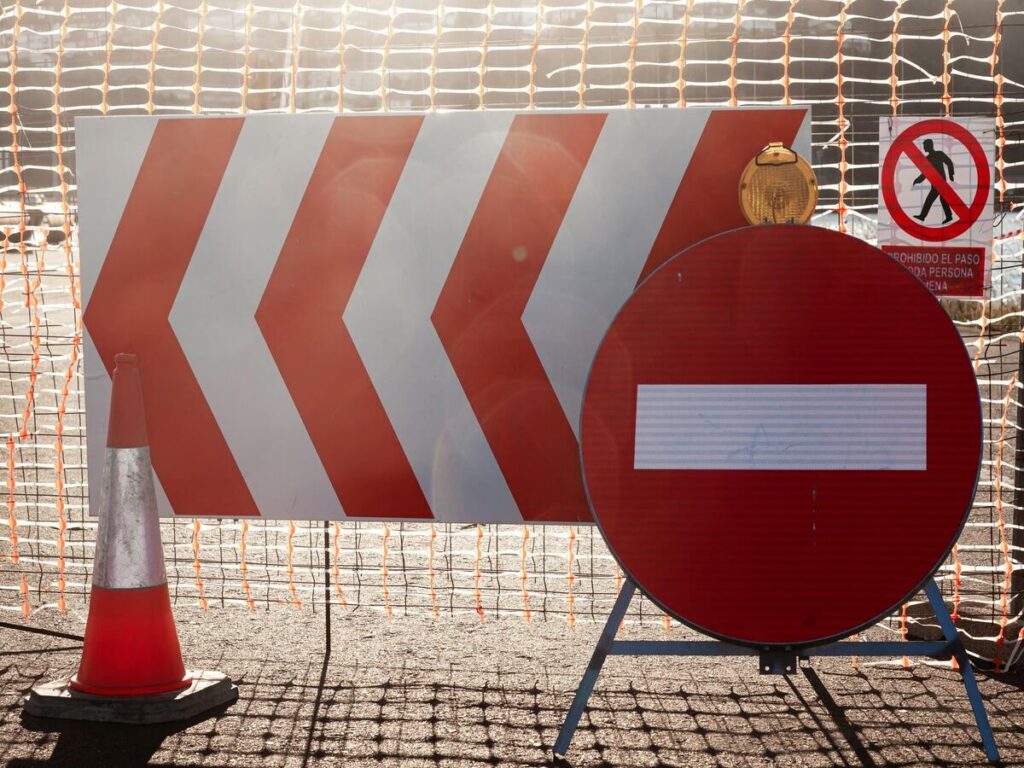
도로교통안전표지판 규정
도로 안전 표지판이 제대로 작동하려면 엄격한 규칙을 따라야 합니다.. 미국에서, 그만큼 균일 한 교통 통제 장치 매뉴얼 (mutcd) 메인 가이드입니다. 이러한 규칙을 따르면 도로가 더 안전해지고 법적 위험이 낮아진다는 점을 강조합니다.. 이러한 규칙을 준수하는 계약자는 생명을 구하고 소송을 피합니다..
| 증거 유형 | 그것이 의미하는 바 |
|---|---|
| 국가표준 | MUTCD는 미국 교통표지판의 주요 가이드입니다.. |
| 법적 위험 감소 | MUTCD 규칙을 따르면 사고에 대한 소송을 피하는 데 도움이 됩니다.. |
| 합리적인 가격의 규정 준수 | MUTCD 규칙을 충족하는 데는 비용이 적게 들지만 많은 도움이 됩니다.. |
| 법적 보호 | MUTCD는 도로 안전에 관한 법원 사건의 표준을 설정합니다.. |
| 효율성 이점 | 계약자는 법이 적용되지 않는 도로에도 MUTCD 규칙을 사용합니다.. |
다른 규칙, ANSI Z535.2 및 ISO와 같은 7010, 또한 중요하다. 도로 교통 안전 표지판을 읽고 이해하기 쉽게 만듭니다.. 이 규칙은 간단한 단어를 사용합니다., 명확한 기호, 혼란을 피하기 위해 좋은 배치. 이를 무시하면 충돌이 발생할 수 있습니다., 벌금, 그리고 명예에 해를 끼치다.
잘못된 기호 관행
표지판 규칙을 위반하면 종종 도로가 안전하지 않게 됩니다. 일반적인 문제는 다음과 같습니다.:
- 나무나 덤불로 인해 표지판이 막혔습니다..
- 간판이 너무 작아서 멀리서 읽을 수 없음.
- 밤에는 조명이 좋지 않아 간판이 잘 보이지 않습니다..
- 파괴자에 의해 넘어지거나 손상된 표지판.
- 표지판이 너무 많음, 집중하기 어렵게 만든다.
이러한 문제는 운전자를 혼란스럽게 하고 더 많은 사고로 이어집니다.. 예를 들어, 나쁜 교차로는 종종 잘못된 방향으로의 운전을 유발합니다. 에 대한 300 매년 이런 사고로 사람들이 죽는다, 그리고 대부분은 매우 심각해요.
오래된 연구에서는 나쁜 신호가 어떻게 사고를 유발하는지 보여줍니다.. 1970 년대, 연구 결과 40% 의 충돌은 잘못된 도로 교통 안전 표지판이나 도로 문제와 관련이 있었습니다.. 이는 기호 규칙을 따르는 것이 왜 그렇게 중요한지 증명합니다.. 이러한 실수를 해결하면 도로가 더 안전해지고 충돌을 예방할 수 있습니다..
불량 간판으로 인한 사고 예방 솔루션
작업 단계별 계획 표시
사고를 중단합니다, 모든 프로젝트 단계에 대한 도로 교통 안전 표지판 계획. 작업이 진행됨에 따라 건설 현장도 변화합니다.. 이전에 작동했던 표지판이 나중에 맞지 않을 수도 있습니다.. 단계별 표지판 업데이트로 운전자와 작업자의 안전 유지.
예를 들어, 도로 수리 중, 차선이 바뀌거나 우회로가 열릴 수 있습니다.. 이러한 변화에 맞게 표지판을 조정하세요. 단계 기반 계획을 통해 표지판을 올바르게 배치하고 적시에 업데이트할 수 있습니다.. 이것은 혼란을 줄이고 트래픽이 잘 움직입니다.
팁: 안전 전문가에게 표지판 계획에 대한 도움을 요청하세요. 그들은 위험을 발견하고 표지판을 위한 가장 좋은 장소를 제안할 수 있습니다..
강력하고 오래 지속되는 표지판 구매
저렴한 간판은 빨리 깨지거나 희미해집니다. 프레임이 깨졌거나 색상이 바랜 경우 표지판을 보기가 어렵습니다., 특히 밤에. 강력한 구매, 고품질 표지판은 더 오랫동안 명확하고 유용하게 유지됩니다..
반사 소재와 내후성 코팅으로 언제든지 표지판을 더 쉽게 볼 수 있습니다.. 예를 들어, 반사층이 있는 알루미늄 간판은 플라스틱 간판보다 오래 지속됩니다.. 좋은 표지판은 처음에는 비용이 더 많이 들지만 사고를 줄이고 오래 지속되므로 비용을 절약할 수 있습니다..
메모: 강력한 신호는 MUTCD 및 ISO와 같은 규칙도 따릅니다. 7010, 벌금을 피하는 데 도움이 됩니다.
표지판에 기호 또는 다중 언어 추가
다양한 문화가 있는 지역에서, 언어 격차로 인해 혼란이 발생할 수 있음. 기호나 더 많은 언어가 포함된 표지판은 모든 사람이 안전 규칙을 이해하는 데 도움이 됩니다.. 예를 들어, “주의: 번개 모양의 '고전압' 표시는 읽지 않아도 위험을 나타냅니다..
연구에 따르면 다국어 또는 기호 기반 표지판을 사용하면 사고 발생률이 더 적습니다.. 기호와 번역을 사용하여 모두에게 안전한 사이트를 만드세요.
이모티콘 예시: ⚠️ 이와 같은 경고 기호는 위험을 빠르게 표시하고 주의를 끌게 합니다..
안전팀으로부터 표지판 관련 도움 받기
안전팀과 협력하면 나쁜 징후로 인한 사고를 예방할 수 있습니다.. 이 전문가들은 표지판을 올바르게 배치하고 안전 규칙을 따르는 방법을 알고 있습니다..
안전팀이 중요한 이유
안전팀은 공사 구역 및 분주한 작업 구역의 위험을 이해합니다.. 그들은 교통 흐름을 확인합니다, 시계, 그리고 위험. 일찍 포함시켜서, 숨겨진 표지판이나 혼란스러운 레이아웃과 같은 문제를 해결할 수 있습니다.
팁: 프로젝트 시작 시 안전 전문가와 상담하세요. 그들의 조언은 시간을 절약하고 실수를 예방할 수 있습니다.
안전팀 활용의 이점
- 올바른 배치: 안전팀은 표지판을 쉽게 볼 수 있도록 확인합니다.. 표지판을 너무 낮거나 나무나 기계 뒤에 두는 것을 피합니다..
- 다음 규칙: 전문가들은 표지판이 MUTCD 또는 ANSI와 같은 규칙을 충족하는지 확인합니다.. 벌금이나 법적 문제를 피하는 데 도움이 됩니다..
- 정기적 인 수표: 안전팀은 작업 변경에 따라 표지판을 명확하고 유용하게 유지하기 위해 자주 표지판을 확인합니다..
안전팀과 협력하는 방법
안전팀과 원활하게 협력하려면, 계획과 일정을 공유하세요. 표지판 자료에 대한 조언을 구하세요., 놓기, 및 업데이트. 새로운 문제를 해결하기 위해 정기적인 사이트 점검을 계획하세요..
메모: 안전팀을 참여시키면 안전과 생명을 구하는 데 관심이 있다는 것을 알 수 있습니다..
안전팀과 협력하여, 표지판이 안전한지 확인하세요, 규칙을 따르십시오, 사고 예방에 도움을 주고.
Missing or bad road signs can cause avoidable accidents. These safety signs give important details to help you stay safe. If signs are missing, old, or unclear, 사고가 더 자주 발생함. Studies show bad signs confuse drivers and create dangers for everyone.
이것을 고치려면, plan ahead and follow safety rules. Use clear and updated safety signs to lower accident risks. Focus on safety by using strong signs and asking experts for help.
FAQ
What are common mistakes with road traffic safety signs?
Contractors often make errors like placing signs too low. They may use old signs or forget to update them during work. Missing multilingual signs and skipping reflective materials also cause issues. These mistakes confuse drivers and lead to accidents.
How can you make sure signs follow safety rules?
Follow rules like MUTCD, ANSI Z535.2, 그리고 ISO 7010. Use clear pictures, 안전 표지판을 올바르게 배치하십시오, 반사 소재를 추가하고. 표지판이 표준을 충족하는지 자주 확인하세요.. 안전 전문가에게 표지판 계획 검토를 요청하세요.
팁: 밤이나 악천후에도 표지판이 보이는지 항상 테스트하세요..
다국어 표지판이 중요한 이유?
다국어 표지판은 사람들이 다양한 분야의 안전 규칙을 이해하는 데 도움이 됩니다.. 혼란을 줄이고 사고를 예방합니다.. 기호를 추가하면 모든 사람이 메시지를 이해하는 데 도움이 됩니다., 읽지 않고도.
임시 표지판을 얼마나 자주 업데이트해야 합니까??
사이트가 변경될 때마다 임시 표지판 업데이트. 건설 구역 이동, 오래된 표지판은 사람들을 혼란스럽게 할 수 있습니다. 정기적인 업데이트로 작업자와 운전자의 안전을 지키고 규칙을 준수하세요..
간판을 더 오래 지속시키는 재료?
반사층이 있는 알루미늄과 같은 강한 재료를 사용하십시오.. 이 소재는 날씨에 강하고 밤에도 눈에 띕니다.. 고품질의 안전표지는 사고와 수리를 줄여 시간이 지남에 따라 비용이 절감됩니다..
메모: 내구성 있는 안전 표지판에 더 많은 돈을 투자하면 사고와 벌금을 방지하여 비용을 절약할 수 있습니다..
